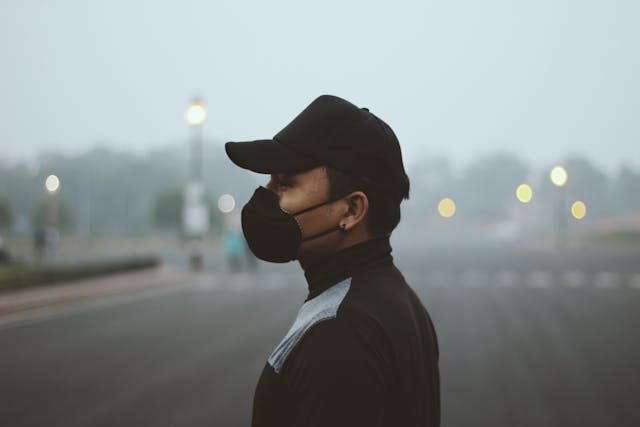Ambala and Amritsar lead with alarming AQI levels, as Delhi experiences mid-winter pollution spikes
In the aftermath of the Deepavali festivities, air quality across India has taken a significant downturn, with 99 out of 265 cities monitored by the Central Pollution Control Board (CPCB) recording “poor” air quality levels as of November 1, 2024. The alarming figures underscore the environmental consequences of the celebrations, particularly due to widespread fireworks usage, which contributed to a marked rise in pollution levels across the country.
Ambala in Haryana reported the highest Air Quality Index (AQI) value at 367, a figure that starkly indicates the severity of the pollution crisis. Following closely, Amritsar in Punjab registered an AQI of 350. The capital city, Delhi, also faced dire conditions, with an average AQI of 339. These levels reflect a concerning trend, with PM2.5 particulate matter concentrations peaking at values typically observed only during the mid-winter months when pollution is traditionally at its worst.
The AQI categorisation classifies values above 200 as “poor,” highlighting significant health risks for vulnerable groups, including children, the elderly, and individuals with pre-existing respiratory conditions. The widespread use of fireworks during Deepavali celebrations has often been cited as a major contributor to these spikes in air pollution, as the festive activities release a plethora of harmful chemicals into the atmosphere.
Embed from Getty ImagesVisual scenes from the celebrations show vibrant fireworks lighting up the skies, especially in regions like Amritsar, where the festivities were in full swing just prior to the alarming pollution reports. However, as residents and revelers delight in the aesthetic splendor, the hidden costs to air quality and public health become all too apparent in the subsequent days.
Health experts have voiced concerns about the immediate and long-term implications of such high pollution levels. Prolonged exposure to poor air quality can lead to respiratory ailments, cardiovascular diseases, and aggravate existing health conditions. The smog and haze that envelop major cities during this time can also lead to reduced visibility, increasing the risks associated with road travel and outdoor activities.
Authorities and environmentalists are urging citizens to reconsider the impact of fireworks on air quality, calling for a more sustainable approach to celebrating festivals. Suggestions include advocating for quieter, less polluting alternatives to traditional fireworks, such as laser light shows and drone displays, which have been gaining popularity in various urban centres as environmentally friendly options.
In light of the severe air quality reports, it is imperative for local governments to implement stricter regulations regarding fireworks usage during celebrations. Public awareness campaigns that educate citizens on the health risks associated with poor air quality and the importance of sustainable practices could also play a vital role in mitigating pollution in the future.
As air quality monitoring continues, the need for immediate action to address this crisis has never been more urgent. Cities across India must collaborate with environmental agencies to develop comprehensive strategies aimed at improving air quality, particularly during periods of heightened pollution risk associated with festivities.
The sharp decline in air quality post-Deepavali serves as a stark reminder of the delicate balance between cultural celebrations and environmental sustainability. While the joy of festivals is deeply ingrained in Indian culture, it is essential to find ways to celebrate that do not compromise public health or the environment.
